A rare violin by Pietro Valenzano in Rome, 1826
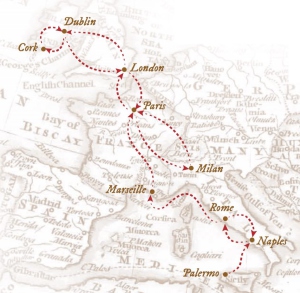
From our catalog to the Vincenzo Panormo exhibition in London: Panormo was perhaps the most extreme of the roaming violinmakers.
In reading Andrew Fairfax’s new biography for the Panormo exhibition in October I am struck by how many violin makers were transient in the late 18th and early 19th centuries. Makers have migrated in search of work since the earliest times but the period 1750–1810 seems to have been particularly unstable for violin makers in many parts of Europe. Giovanni Baptista Guadagnini was the first major maker to build a career while hopping from city to city, while Vincenzo Panormo probably holds the record for most-traveled maker, working in perhaps as many as eight cities in five different countries. Many other makers were also on the move during this period, including Giuseppe Guadagnini, Francesco Goffriller, both Pietro Guarneris, Carlo Tononi, Antonio Gibertini, Anselmo Bellosio, Nicolas Lupot and François-Louis Pique. And, as Philip Kass points out, just about every maker of the Mantua school from Pietro Guarneri onwards arrived in Mantua from elsewhere.
Reconstructing an accurate biography for these makers is challenging as the archival records are scattered among different cities. Often operating under the radar of the official guilds and registries, these itinerant makers left fewer footprints than those who owned property or stayed within a particular parish for much of their lives.
The two makers of the Valenzano family, Giovanni Maria and Pietro, who are assumed to be brothers, have left evidence of a very itinerant working life. Instruments attributed to Giovanni Maria, the more prolific maker of the two, bear labels of Asti, Padua, Valenza, Barcelona, Nice, Genoa, Rome and Trieste. Original labels are scarce and a precise chronology of his life has yet to be assembled, but the few instruments that survive show a precise and professional maker who used attractive materials and employed a very successful, flat arched Stradivari model.
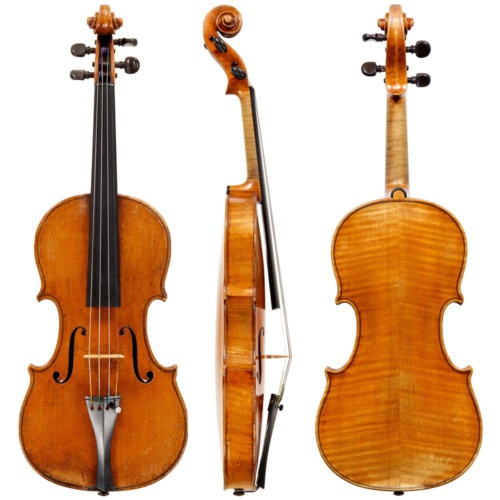
Perhaps the only known surviving instrument of Pietro Valenzano, dated 1826 in Rome, opus 3
This charming violin dated 1826 in Rome is perhaps the only known surviving instrument of Pietro Valenzano. The manuscript label numbers the violin opus 3. It is built on a Stradivari model with attractively flamed maple. The sound-holes are also an accurate copy of Stradivari with scooped wings and undersized notches. The purfling is precisely cut with accurate but tail-less mitres. The wide corners show a feature which is also typical of Giovanni Maria: knife-cuts continuing the inner line of the purfling channel and extending beyond the mitre. The head is finely carved with a rounded eye and a sharply terminated final turn to the volute. The varnish is a rich orange-brown, similar to that used by Giovanni Maria.
The year 1826 corresponds to the period in which Giovanni Maria was also active in Rome. A violin from 1824 bearing a label of Giovanni Maria is a near twin to this 1826 violin by Pietro, suggesting the two were working closely together.
Below we reproduce a label from a violin by Giovanni Maria from 1825 that I saw in Zurich several years ago. The printed part of the label bears the text, “Joannes Maria Valenzano / astensis in ______ fecit 18__.” It only dawned on me recently how significant this is: most makers print labels in bulk with blank digits for the years – the itinerant Valenzano left the city blank as well!
Pietro is reported to have worked in Piemonte and Naples in addition to Rome but sadly no other instruments are known to us with original labels. Perhaps future researchers will be able to untangle the travels of both Valenzano brothers.
This violin was sold twice by W.E. Hill & Sons in 1950 and 1952. In 1956 it was in the possession of Max Möller of Amsterdam and was featured in an article in Violins and Violinists of the same year. It was then sold in 1967 by William Lewis & Son and has lived in America ever since.
– Jason Price
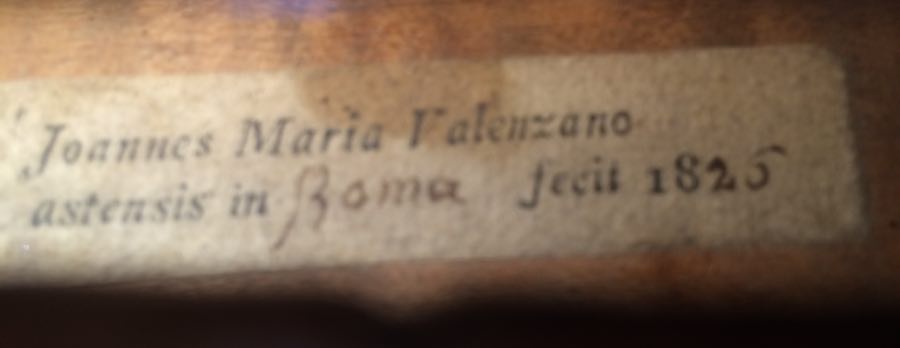
Notice how the city of manufacture is left blank on this label from Giovanni Maria Valenzano in 1825, the year before this violin was made
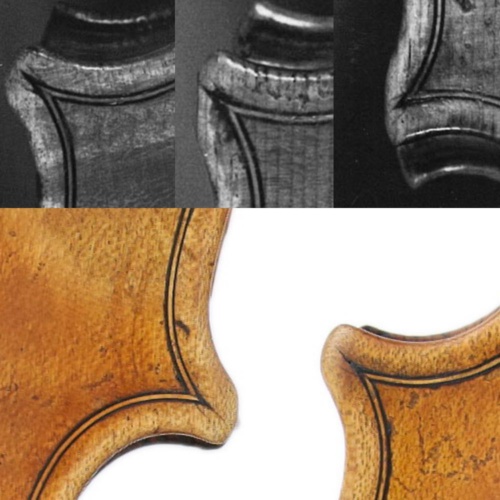
A feature which is typical of Valenzano: knife-cuts continuing the inner line of the purfling channel and extending beyond the mitre
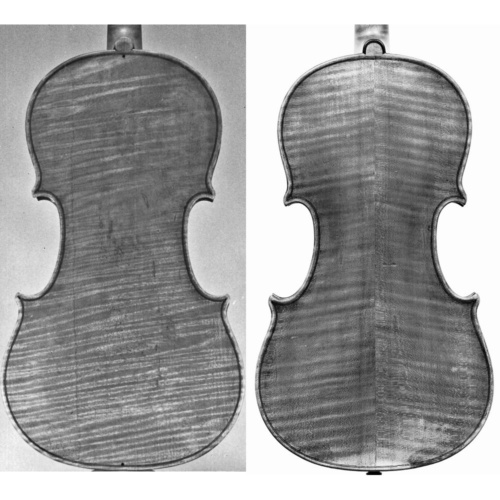
An 1824 Giovani Maria Valenzano (left) and the 1826 Pietro Valenzano (right)
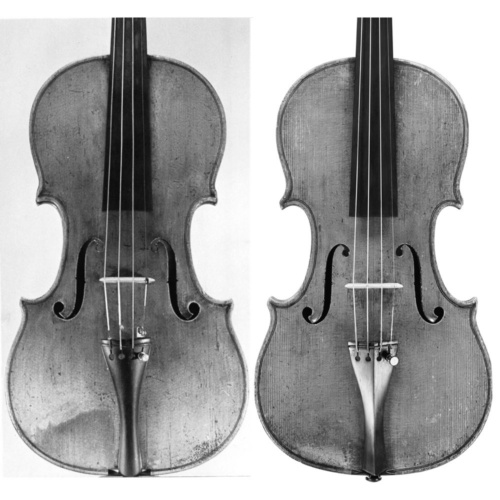
An 1824 Giovani Maria Valenzano (left) and the 1826 Pietro Valenzano (right)